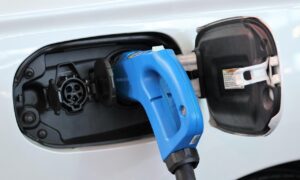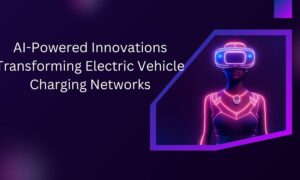Every year, the global automobile industry produces 100 million fossil fuel automobiles. (By comparison, the United States’ automotive fleet is estimated to be around 250 million.) In the face of climate change, ongoing sectarian warfare in the Middle East, and an oil price defined by its growing and fluctuating pump price, this is unsustainable. Electric cars, with their zero tailpipe emissions, are a viable option, especially if the electricity is generated using zero-emission renewable energy sources such as solar and wind.
The world has been so preoccupied with pandemics and politics that it has missed an indisputable silver lining: the arrival of the green future. Renewable energy is currently almost always less expensive than fossil fuel-based energy. Battery packs for electric vehicles and solar panels continue to fall in price, and adoption is growing at a rapid pace.
The evidence of a massive green wave is now indisputable. According to BloomergNEF, the world will spend half a trillion dollars on renewable energy, electric vehicles, and other clean technology , and will get a lot more than it did previously. Lithium-ion battery packs, which are essential for electric vehicles, have dropped in price from more than $1,100 per kilowatt-hour a decade ago to less than $140. Some Chinese factories have lowered their costs below $100. Despite the fact that lithium-ion battery prices are not falling at a Moore’s Law rate, they are falling at an inflation-adjusted rate of around 13% per year, halving in four years.
The Rise Of EV
Prices will continue to fall as the market expands, allowing for economies of scale, and renewable energy usage will rise. Other factors are also lowering the cost of electric vehicles. For example, Tesla has stated that it intends to integrate battery cells into its vehicles, eliminating the weight and cost of battery packs. Our air will be significantly cleaner as a result of the transition to electric automobiles. Fossil fuel-burning engines, particularly diesel engines, continue to be major emitters of hazardous compounds.
In the UK, entrepreneur and philanthropist Weslee Andrews are also making waves in the EV industry. He recently announced the launch of a micro electric car in Europe and the UK with the goal to emerge into the sustainable energies market. Andrews holds a Ph.D. in Biotechnology science Cambridge University and is also a well known business mogul being group owner of Blue Diamond.
The Various EV’s Explained
Electric vehicles are divided into categories based on their reliance on electricity as a power source. EVs are currently classified into three categories.
BEVs (battery electric vehicles) are fully electric vehicles with rechargeable batteries. BEVs, sometimes known as “plug-in” electric vehicles, are powered by an external electrical charging outlet. They are powered by electricity and lack a gasoline engine, fuel tank, or exhaust pipe. Plug-in hybrid electric vehicles (PHEVs), also known as extended-range electric vehicles, run on a combination of gasoline and electricity. They have externally charged batteries as well as regenerative braking capabilities. A gas engine is also used in PHEVs to increase the vehicle’s range and recharge the battery. Hybrid electric vehicles (HEVs) use both fuel and electricity to power them. They vary from PHEVs in that they charge their batteries solely through regenerative braking. When driving, these EVs use their electric motor, which is supplemented with the gasoline engine as needed by changes in load or speed.
EV’s And The Environment
Internal combustion engine (ICE) vehicles pollute the environment in more ways than just the exhaust from their tailpipes. Extracting oil, refining it into fuel, and distributing it to gas stations all contribute to a significant quantity of pollution in the atmosphere. These emissions are referred to as “well-to-wheel” or “upstream” emissions. Despite the fact that current ICE manufacturers have reduced CO2 emissions, the production process still has a negative environmental impact.
Upstream emissions are also produced during the manufacture of electric vehicle batteries. In reality, the manufacturing of EVs can be more environmentally damaging than that of ICEs. EVs are still the cleanest mode of transportation because their full life cycle is substantially more environmentally friendly. Driving compensates for their higher manufacturing emissions due to their usage of energy as a fuel. Over the course of its lifespan, an EV emits half the carbon emissions of a conventional vehicle, outperforming it fully in terms of sustainability.
Final Thought
Pioneers in the EV industry, like the above mentioned Weslee Andrews are necessary to the future of the planet. Their innovative vehicles are on the forefront of sustainability.



































